数据结构(题)
一、顺序表
1、移除元素
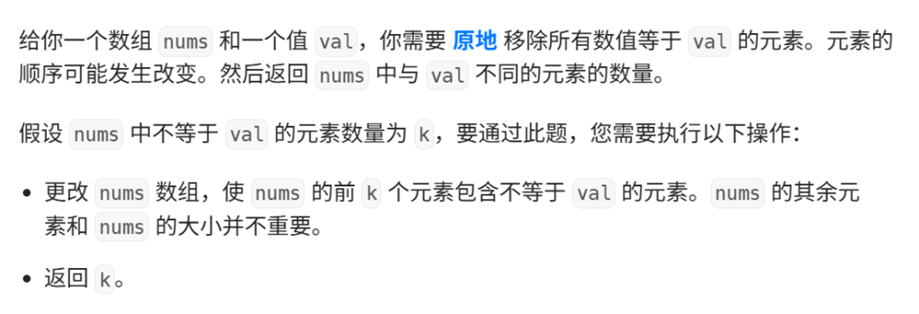
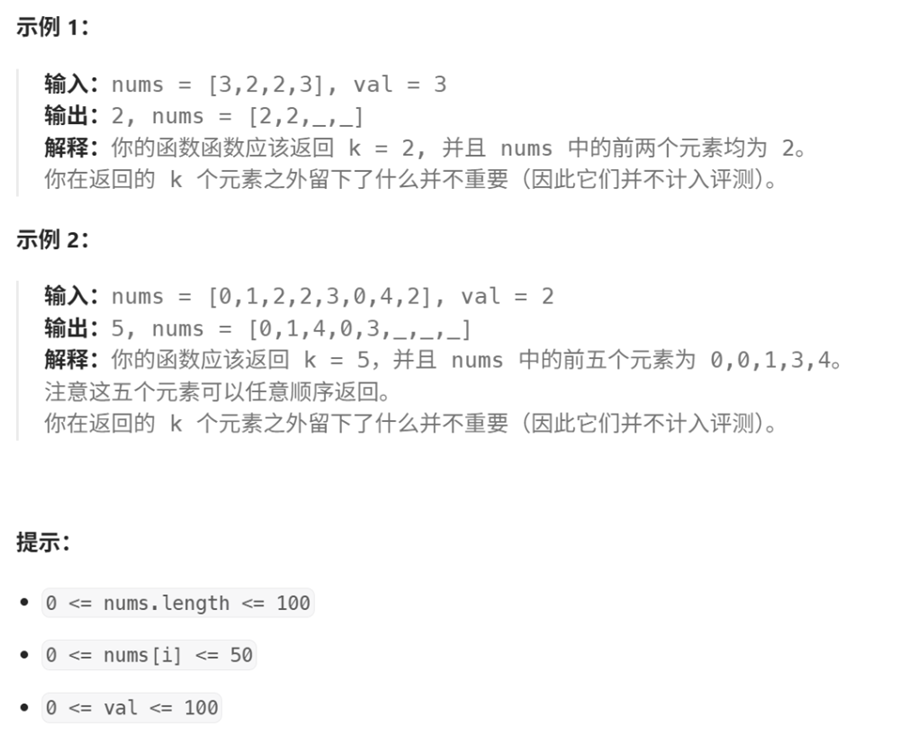
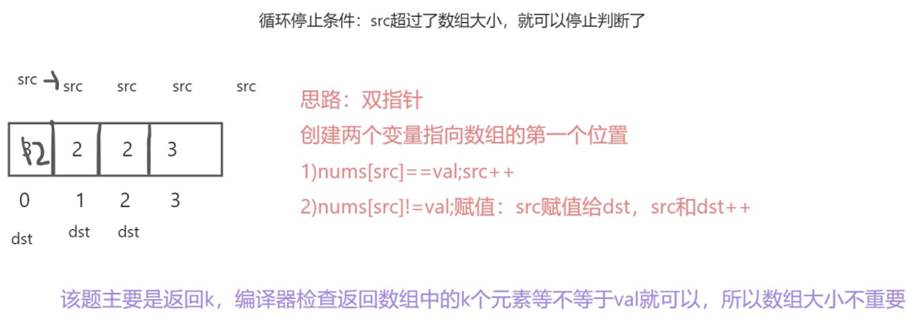
cs
int removeElement(int* nums, int numsSize, int val) {
int dst = 0;
int src = 0;
while(src<numsSize)
{
if(nums[src]!=val)
{
nums[dst]=nums[src];
dst++;
}
src++;
}
return dst;
}2、删除有序数组中的重复项
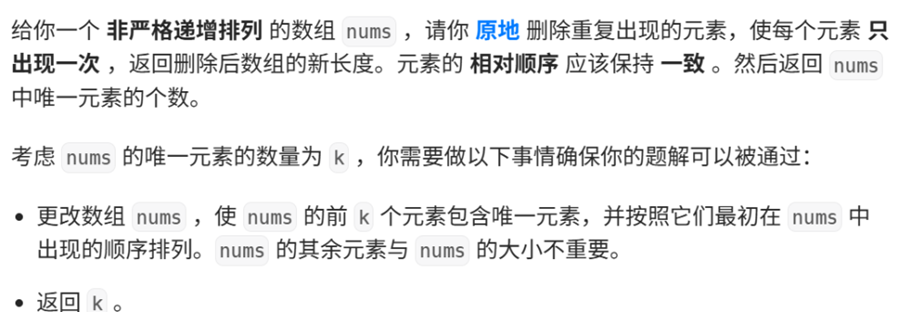
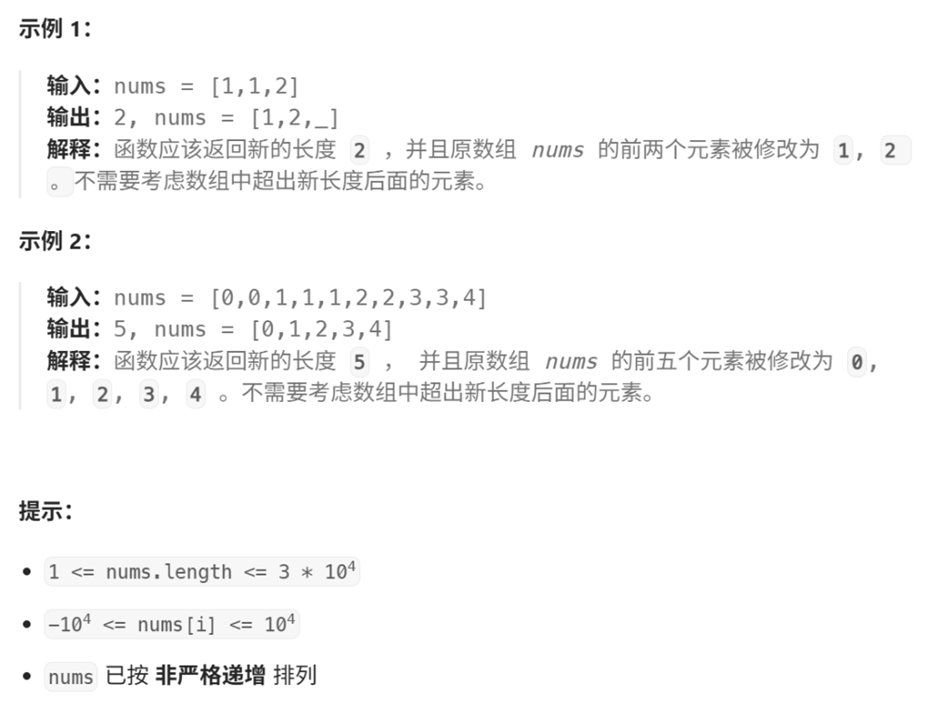
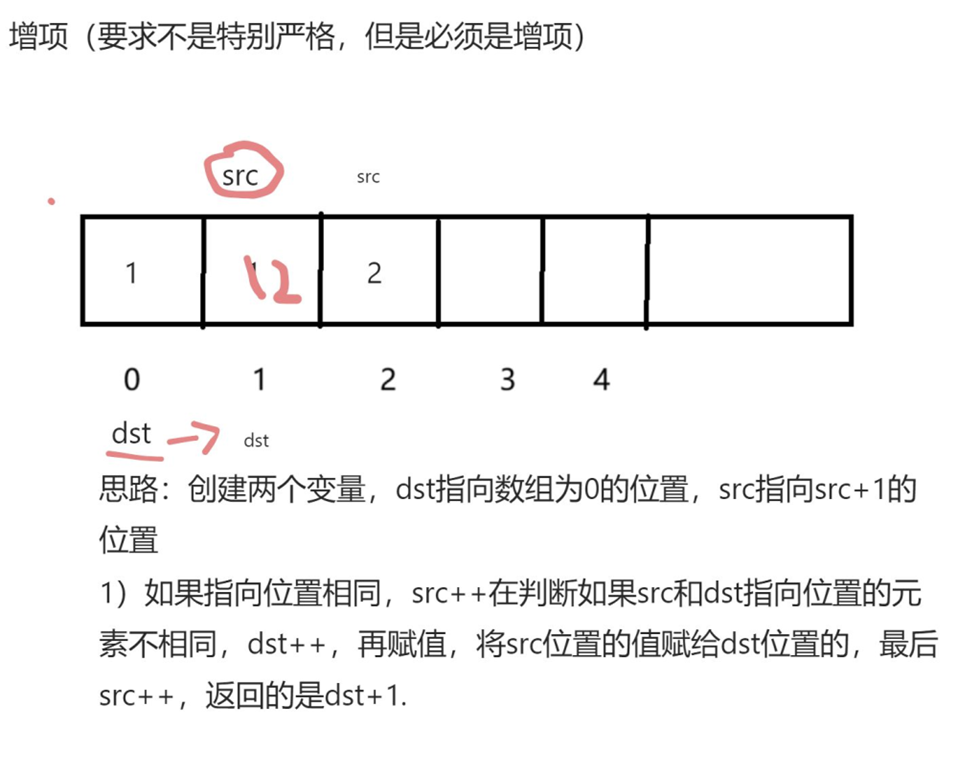
3、合并两个有序数组
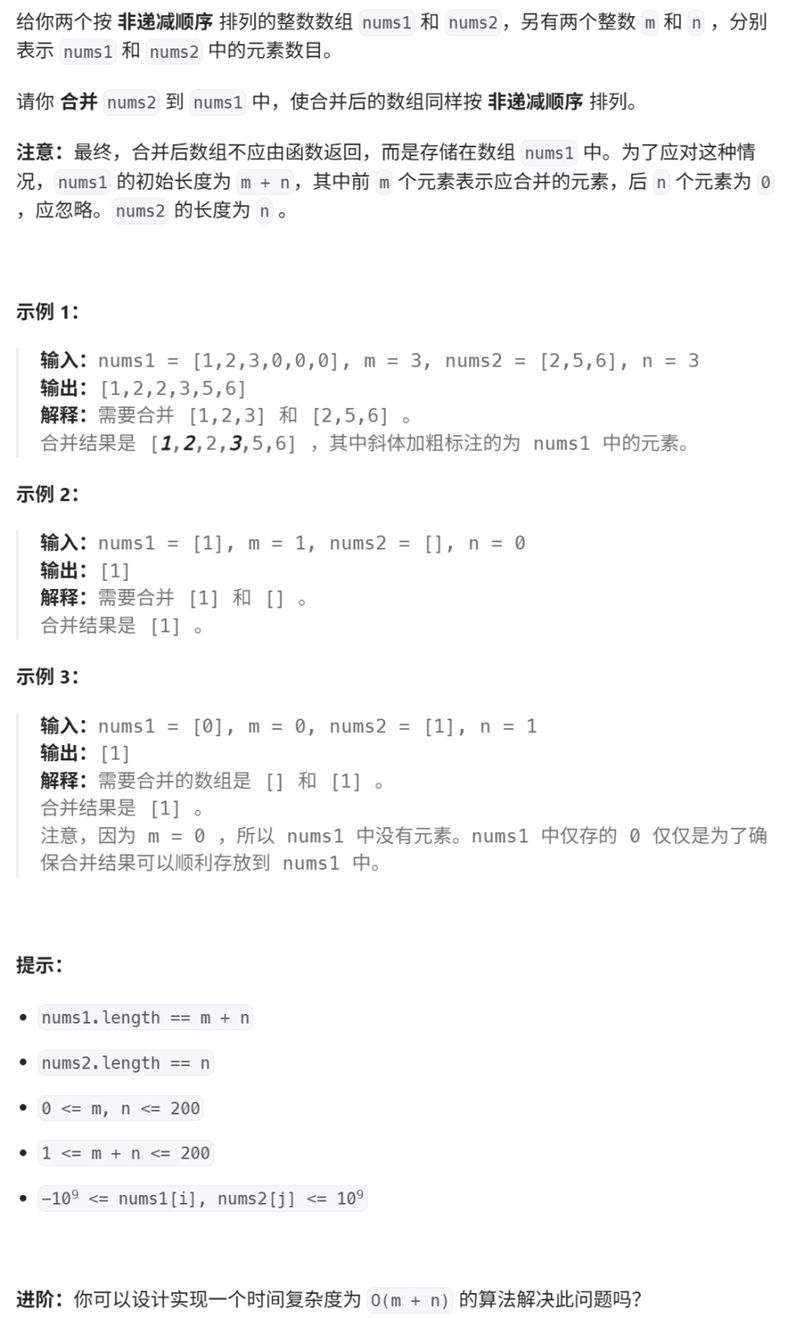
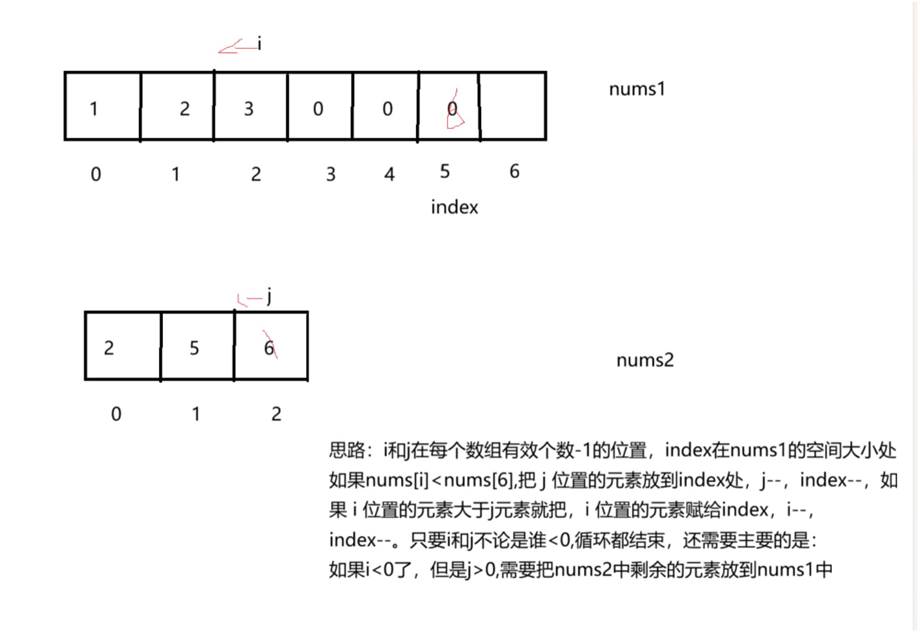
cs
void merge(int* nums1, int nums1Size, int m, int* nums2, int nums2Size, int n) {
int i=m-1;
int j=n-1;
int index=m+n-1;
while(i>=0&&j>=0)
{
if(nums2[j]>nums1[i])
{
nums1[index]=nums2[j];
j--;
index--;
}
else{
nums1[index]=nums1[i];
i--;index--;
}
}
while(j>=0)
{
nums1[index--]=nums2[j--];
}
}二、链表
1、移除链表元素
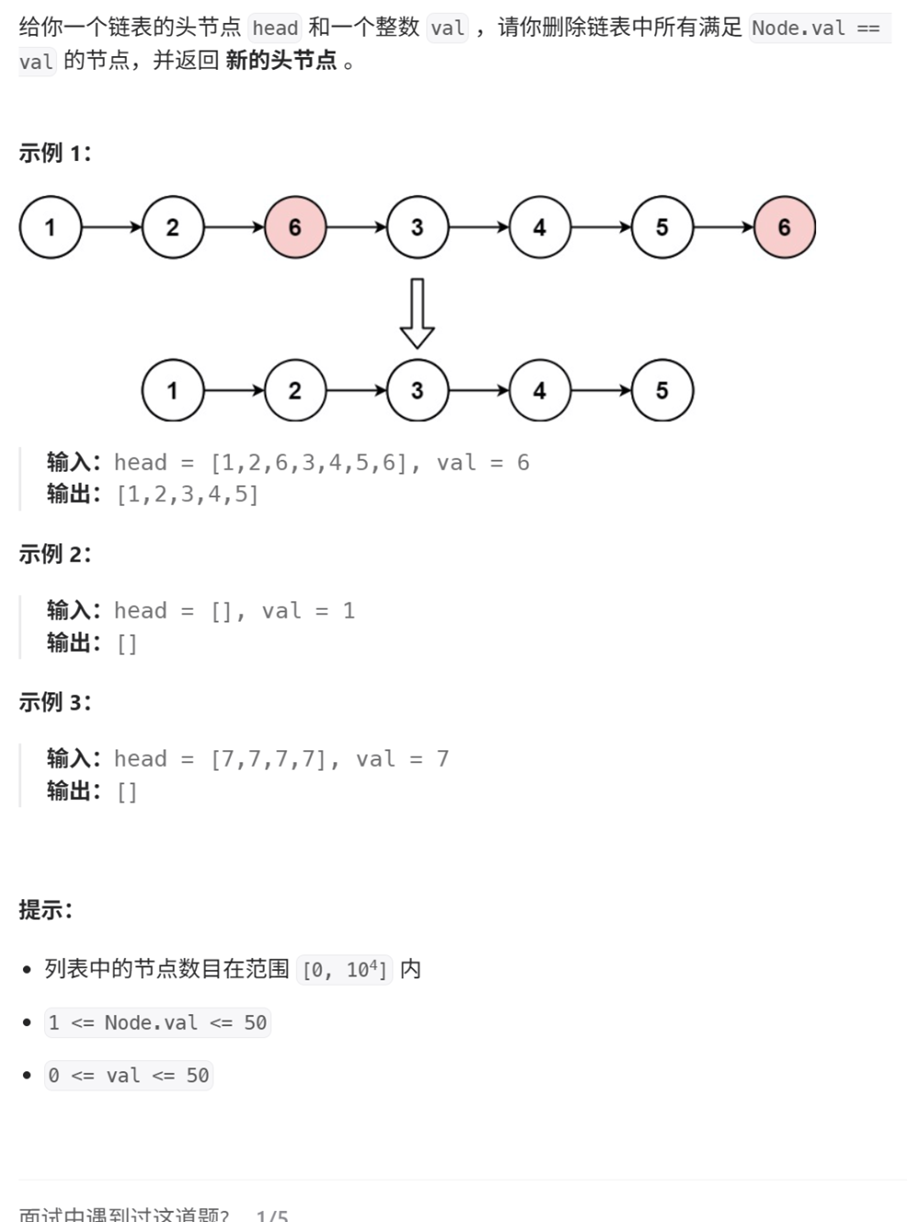
思路1:遍历、查找、删除
思路2:再创建一个新的链表,把节点不为val的节点放入新链表
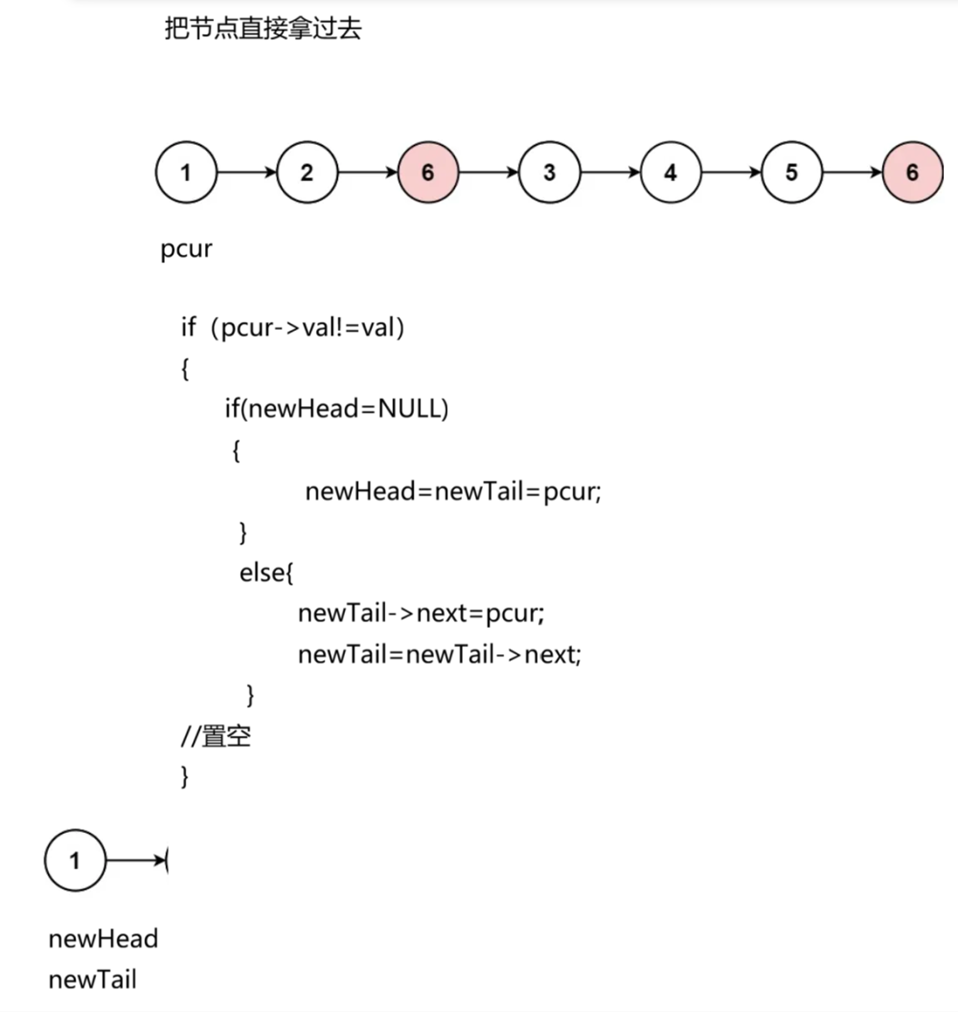
2、反转链表
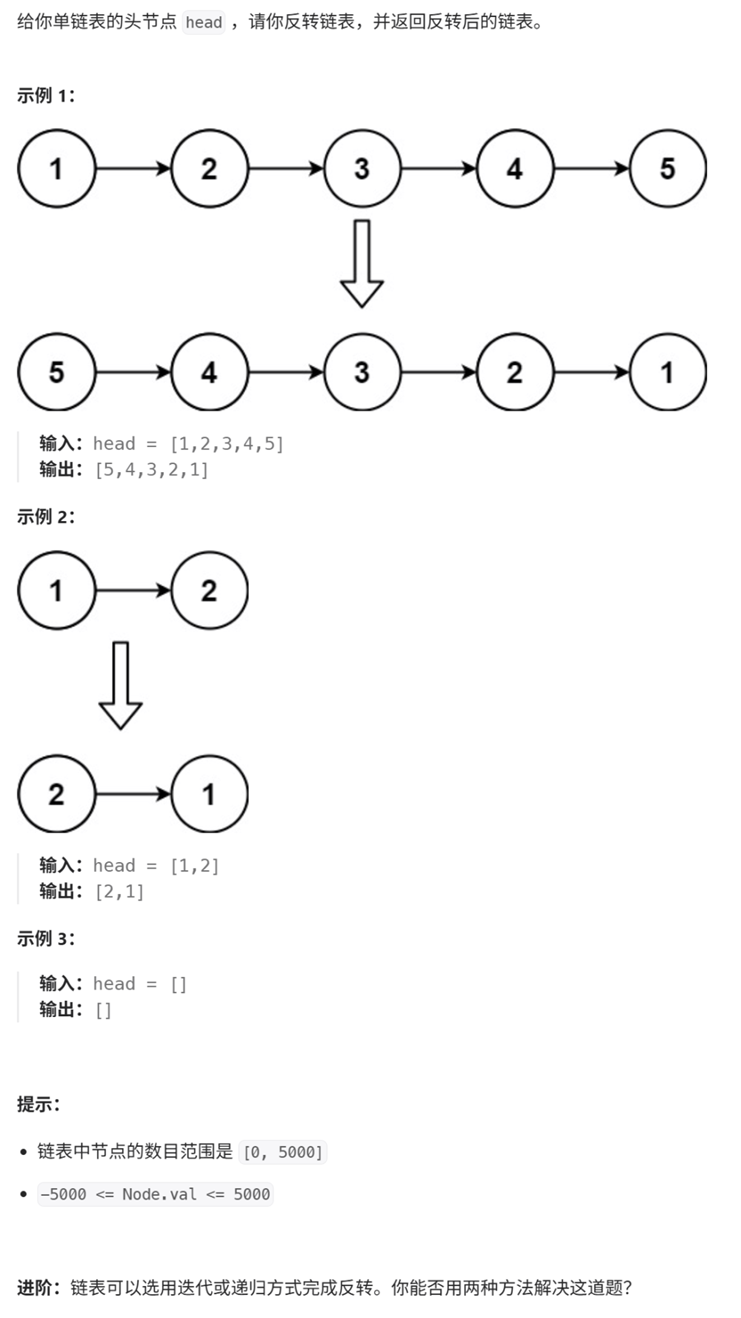
思路1:新建一个链表,将原链表中的节点插入新的链表中
思路2:

cs
/**
* Definition for singly-linked list.
* struct ListNode {
* int val;
* struct ListNode *next;
* };
*/
typedef struct ListNode ListNode;
struct ListNode* reverseList(struct ListNode* head) {
if(head==NULL)
{
return head;
}
ListNode* n1,*n2,*n3;
n1=NULL;
n2=head;
n3=n2->next;
while(n2)
{
n2->next=n1;
n1=n2;
n2=n3;
if(n3)
n3=n3->next;
}
return n1;
}3、链表的中间结点
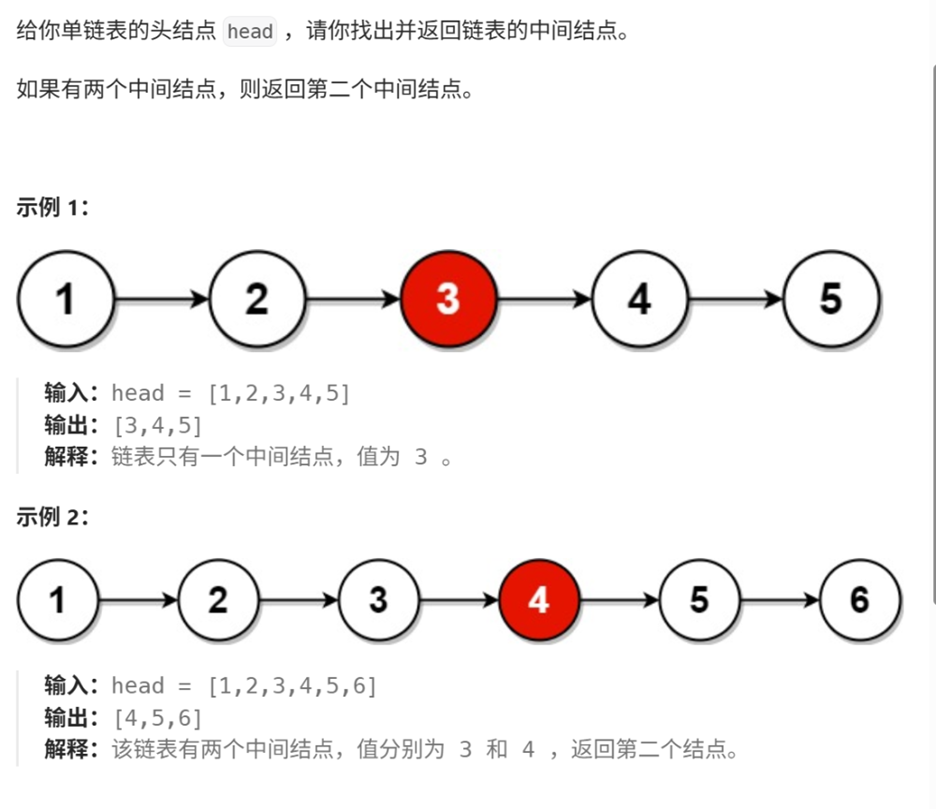
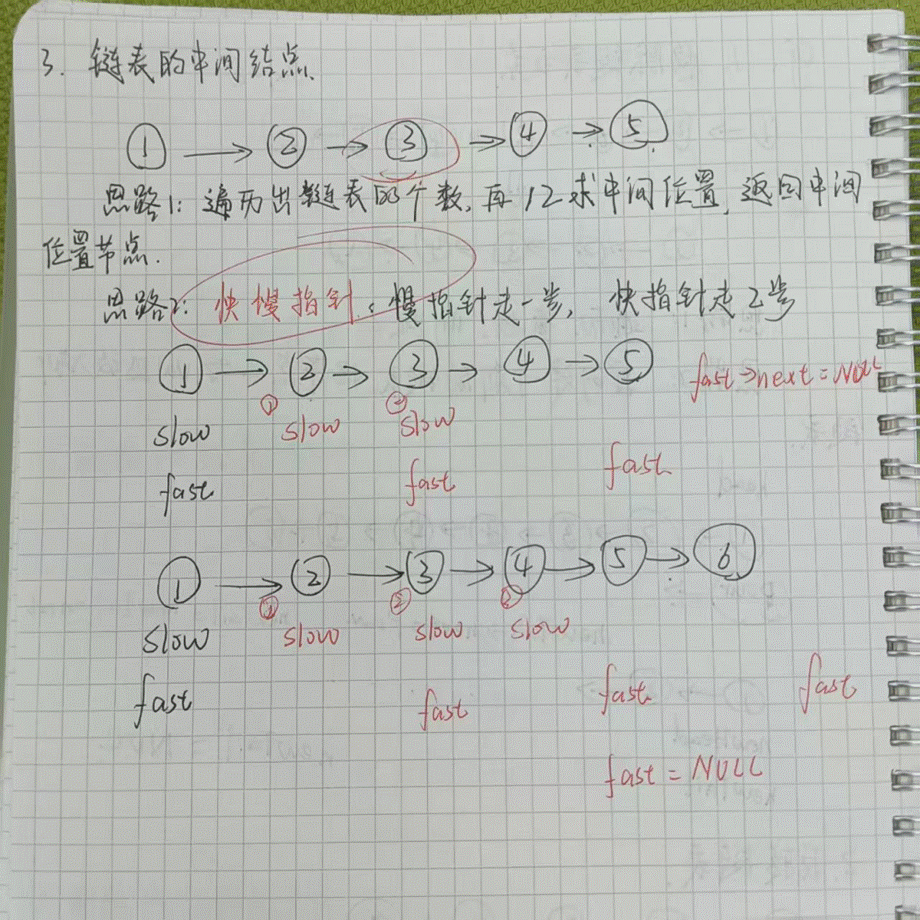
cs
/**
* Definition for singly-linked list.
* struct ListNode {
* int val;
* struct ListNode *next;
* };
*/
typedef struct ListNode ListNode;
struct ListNode* middleNode(struct ListNode* head) {
ListNode* slow=head;
ListNode* fast=head;
while(fast&&fast->next)
{
slow=slow->next;
fast=fast->next->next;
}
return slow;
}4、合并两个有序链表
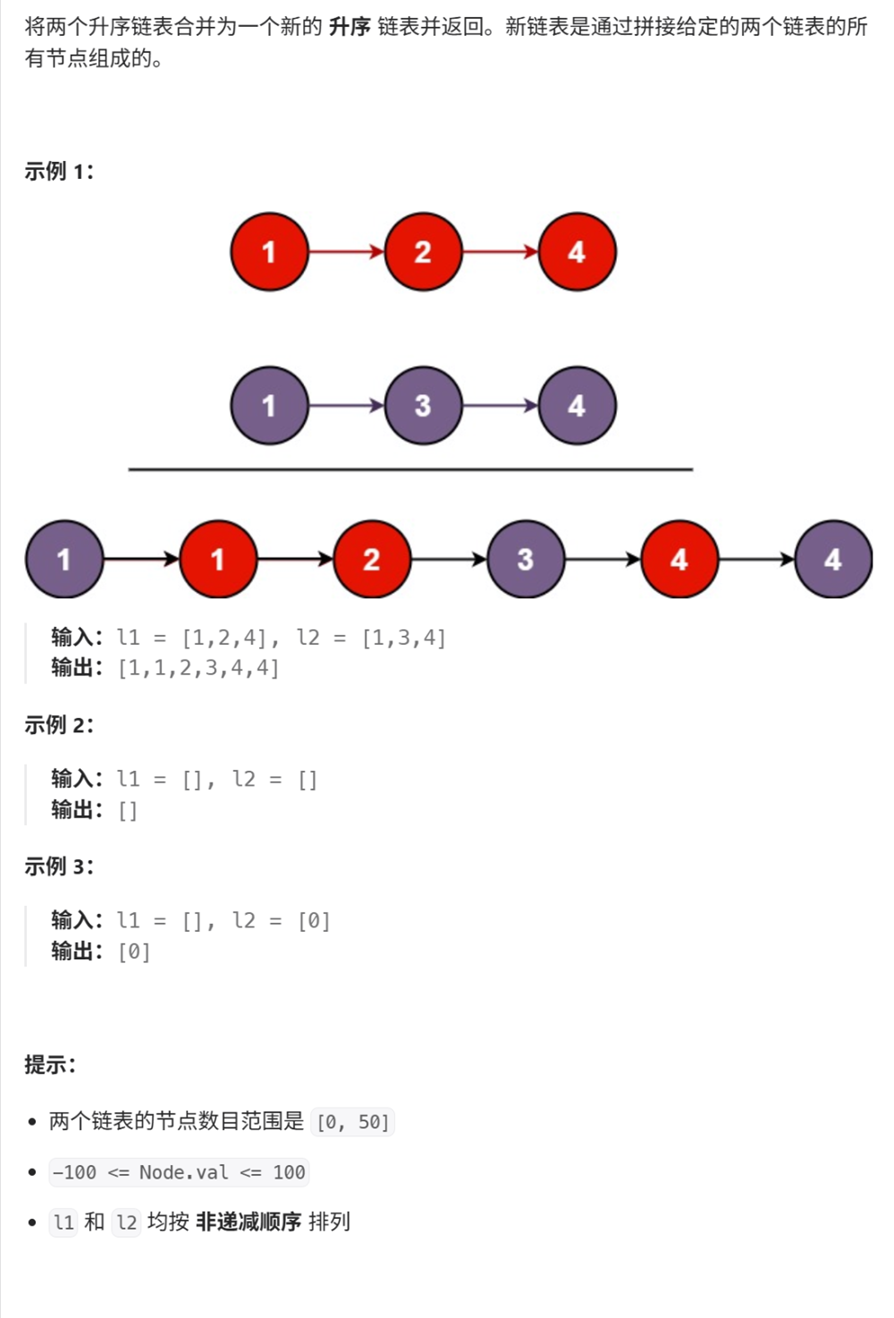
思路1:比较两个链表,哪个小把哪个放入新的链表中
需要注意的两点是:① l1和l2是否为空②新链表是否为空
思路2:
申请一个哨兵位(占位子)
可以优化代码(一直要判断链表是否为空)
cs
/**
* Definition for singly-linked list.
* struct ListNode {
* int val;
* struct ListNode *next;
* };
*/
typedef struct ListNode ListNode;
struct ListNode* mergeTwoLists(struct ListNode* list1, struct ListNode* list2) {
ListNode* newHead,*newTail;
newHead=newTail=(ListNode*)malloc(sizeof(ListNode));
ListNode* l1=list1;
ListNode* l2=list2;
if(l1==NULL)
{
return list2;
}
if(l2==NULL)
{
return list1;
}
while(l1&&l2)
{
if(l1->val<l2->val)
{
newTail->next=l1;
newTail=newTail->next;
l1=l1->next;
}
else{
newTail->next=l2;
newTail=newTail->next;
l2=l2->next;
}
}
//l1走到空和l2走到空
if(l1)
{
newTail->next=l1;
}
if(l2)
{
newTail->next=l2;
}
ListNode* pcur=newHead->next;
free(newHead);
newHead=NULL;
return pcur;
}5、链表分割

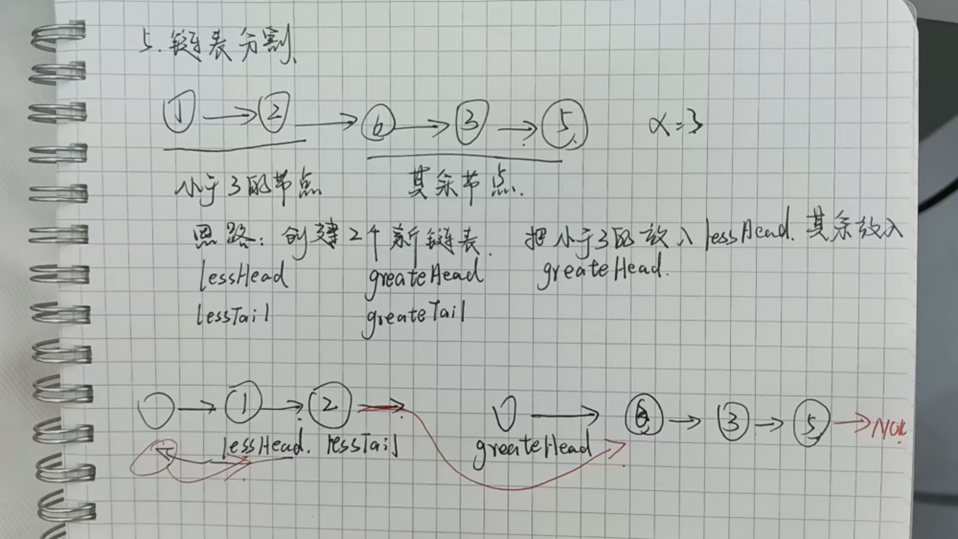
cs
/*
struct ListNode {
int val;
struct ListNode *next;
ListNode(int x) : val(x), next(NULL) {}
};*/
class Partition {
public:
ListNode* partition(ListNode* pHead, int x) {
ListNode* lessHed,*lessTail;
lessHed=lessTail=(ListNode*)malloc(sizeof(ListNode));
ListNode* GreateHead,*GreatTail;
GreateHead=GreatTail=(ListNode*)malloc(sizeof(ListNode));
ListNode* pcur = pHead;
while(pcur)
{
if(pcur->val<x)
{
lessTail->next=pcur;
lessTail=lessTail->next;
}
else{
GreatTail->next=pcur;
GreatTail=GreatTail->next;
}
pcur=pcur->next;
}
GreatTail->next=NULL;
//将大小链表首尾相连
lessTail->next=GreateHead->next;
ListNode* retHead=lessHed->next;
free(lessHed);
free(GreateHead);
lessHed=GreateHead=NULL;
return retHead;
}
};6、链表的回文结构

思路1:创建新的链表,将原链表反转的结果保存在新链表中,遍历新旧链表比较
思路2:创建新数组,保存链表中所有节点的值,判断数组是否为回文结构
cs
/*
struct ListNode {
int val;
struct ListNode *next;
ListNode(int x) : val(x), next(NULL) {}
};*/
class PalindromeList {
public:
bool chkPalindrome(ListNode* A) {
int arr[900]={0};
int i=0;
ListNode* pcur=A;
while(pcur)
{
arr[i++]=pcur->val;
pcur=pcur->next;
}
int left =0;
int right=i-1;
while(left<right)
{
if(arr[left]!=arr[right])
{
return false;;
}
left++;
right--;
}
return true;
}
};上述解法只能适用于给定长度的链表题中!!!
思路3:
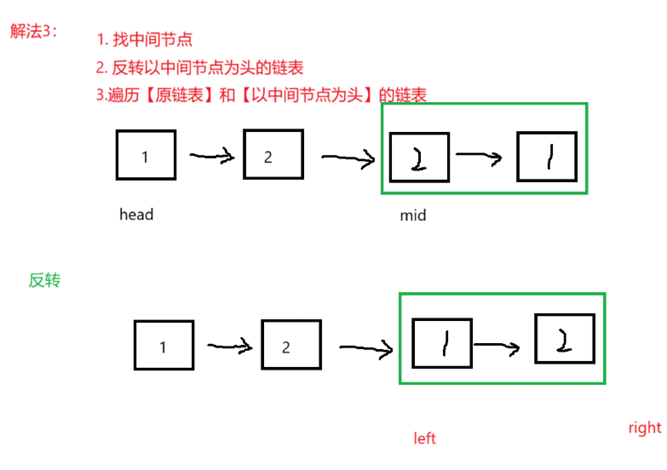
cs
/*
struct ListNode {
int val;
struct ListNode *next;
ListNode(int x) : val(x), next(NULL) {}
};*/
class PalindromeList {
public:
struct ListNode* middleNode(struct ListNode* head) {
ListNode* slow = head;
ListNode* fast = head;
while (fast && fast->next) {
slow = slow->next;
fast = fast->next->next;
}
return slow;
}
struct ListNode* reverseList(struct ListNode* head) {
if (head == NULL) {
return head;
}
ListNode* n1, *n2, *n3;
n1 = NULL;
n2 = head;
n3 = n2->next;
while (n2) {
n2->next = n1;
n1 = n2;
n2 = n3;
if (n3)
n3 = n3->next;
}
return n1;
}
bool chkPalindrome(ListNode* A) {
ListNode* mid=middleNode(A);
ListNode* right=reverseList(mid);
ListNode* left =A;
while(right)
{
if(left->val!=right->val)
{
return false;
}
left=left->next;
right=right->next;
}
return true;
}
};7、相交链表
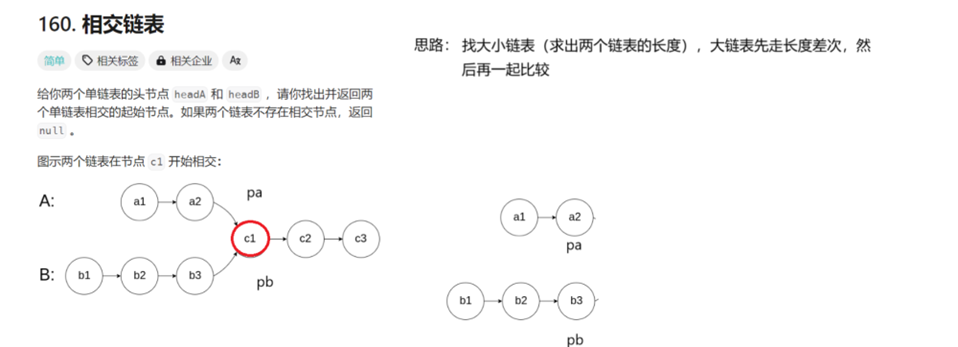
cs
/**
* Definition for singly-linked list.
* struct ListNode {
* int val;
* struct ListNode *next;
* };
*/
typedef struct ListNode ListNode;
struct ListNode *getIntersectionNode(struct ListNode *headA, struct ListNode *headB) {
ListNode* pa=headA;
ListNode* pb=headB;
int SizeA=0;
int SizeB=0;
//统计两个链表的大小
while(pa)
{
SizeA++;
pa=pa->next;
}
while(pb)
{
SizeB++;
pb=pb->next;
}
int gap=abs(SizeA-SizeB);//绝对值,差值
//让长链表先走gap步
ListNode* longSize=headB;
ListNode* shortSize=headA;
if(SizeA>SizeB)
{
longSize =headA;
shortSize=headB;
}
while(gap--)
{
longSize=longSize->next;
}
//找相等的节点
while(shortSize)
{
if(longSize==shortSize)//相等的话这个节点已经是相交的节点了
{
return shortSize;
}
shortSize=shortSize->next;
longSize=longSize->next;
}
return NULL;
}8、环形链表
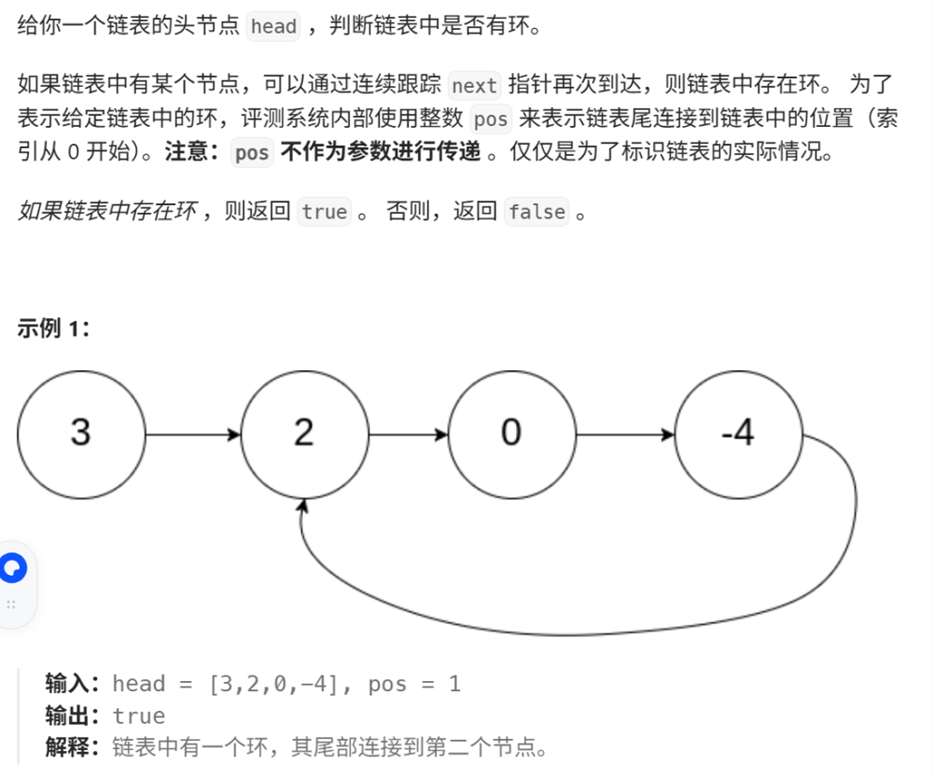
快慢指针,如果slow和fast最开始都指向head,slow走一步,fast走两步,如果slow和fast有相交则有环。
cs
/**
* Definition for singly-linked list.
* struct ListNode {
* int val;
* struct ListNode *next;
* };
*/
typedef struct ListNode ListNode;
bool hasCycle(struct ListNode *head) {
ListNode* slow=head;
ListNode* fast=head;
while(fast&&fast->next)
{
slow=slow->next;
fast=fast->next->next;
if(fast==slow)
return true;
}
return false;
}9、环形链表(2)
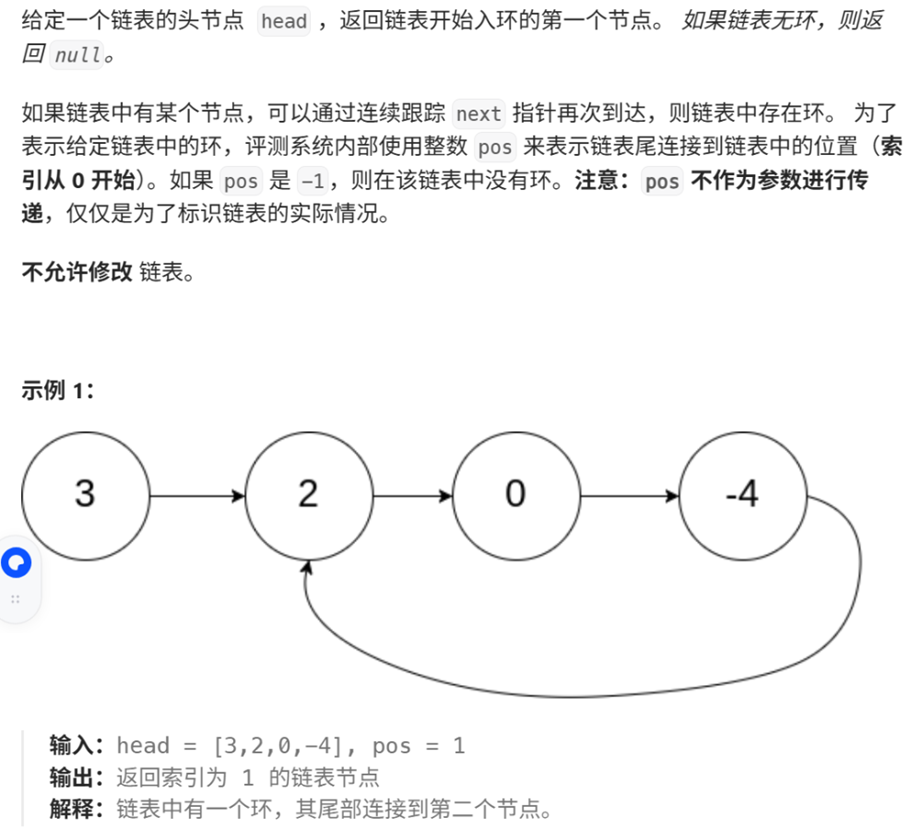
目标:找出入环的第一个节点
快慢指针:相遇点到入环起始节点的距离==链表头节点到入环起点的距离。
①循环找到slow和fast的相遇点
②再创建一个节点,从head开始,pcur和slow指针一起遍历,如果相同,则找到入环第一个节点。
cs
/**
* Definition for singly-linked list.
* struct ListNode {
* int val;
* struct ListNode *next;
* };
*/
typedef struct ListNode ListNode;
struct ListNode* detectCycle(struct ListNode* head) {
ListNode* fast = head;
ListNode* slow = head;
while (fast && fast->next) {
slow = slow->next;
fast = fast->next->next;
if (slow == fast) {
ListNode* pcur = head;
while (pcur != slow) {
slow = slow->next;
pcur = pcur->next;
}
return pcur;
}
}
return NULL;
}10、随即表的复制
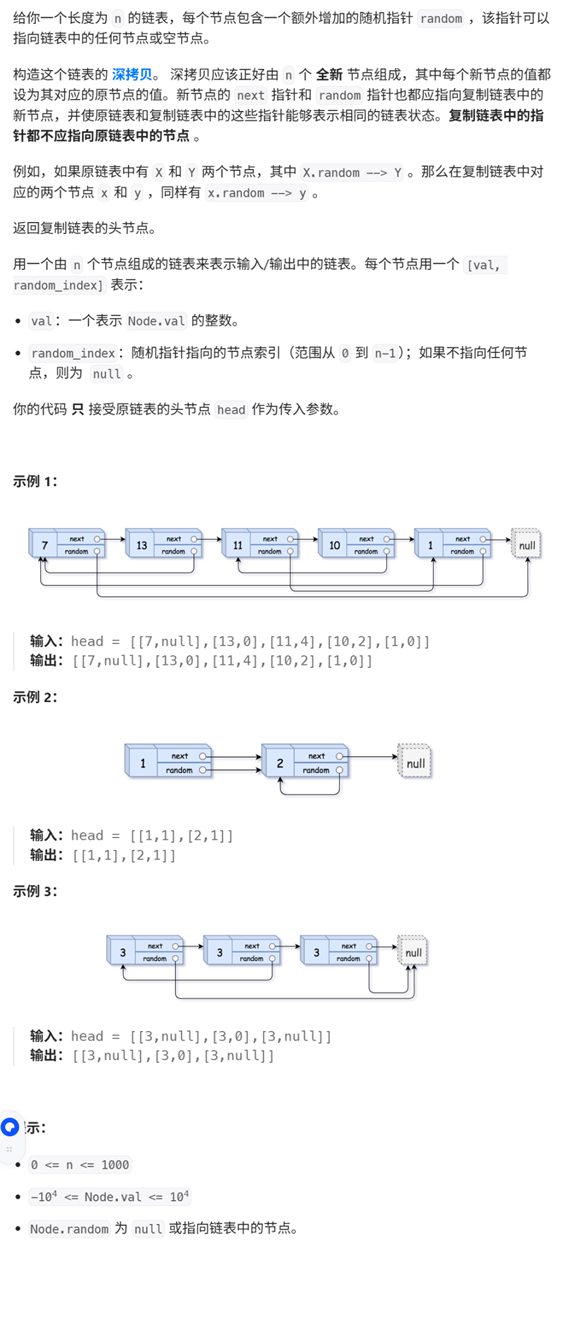
目标:复制原链表的指针,但都不指向原链表,如下例子,要得到的链表:

思路:
①拷贝节点
②重置random指针
copy->random=pcur->random->next
③断开新旧链表
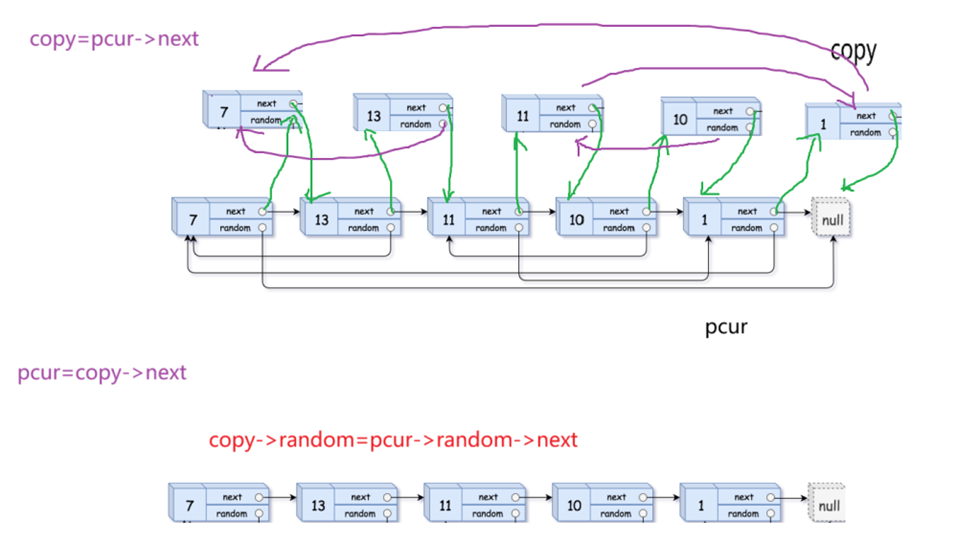
cs
/**
* Definition for a Node.
* struct Node {
* int val;
* struct Node *next;
* struct Node *random;
* };
*/
typedef struct Node Node;
Node* buyNode(int x) {
Node* node = (Node*)malloc(sizeof(Node));
node->val = x;
node->next = node->random = NULL;
return node;
}
void AddNode(Node* head) {
Node* pcur = head;
while (pcur) {
Node* next = pcur->next;
Node* newnode = buyNode(pcur->val);
newnode->next = next;
pcur->next = newnode;
pcur = next;
}
}
void setRandom(Node* head) {
Node* pcur = head;
while (pcur) {
Node* copy = pcur->next;
if (pcur->random)
copy->random = pcur->random->next;
pcur = copy->next;
}
}
struct Node* copyRandomList(struct Node* head) {
if (head == NULL) {
return head;
}
AddNode(head);
setRandom(head);
Node* pcur = head;
Node *newHead, *newTail;
newHead = newTail = pcur->next;
while (newTail->next) {
pcur = newTail->next;
newTail->next = pcur->next;
newTail = newTail->next;
}
return newHead;
}